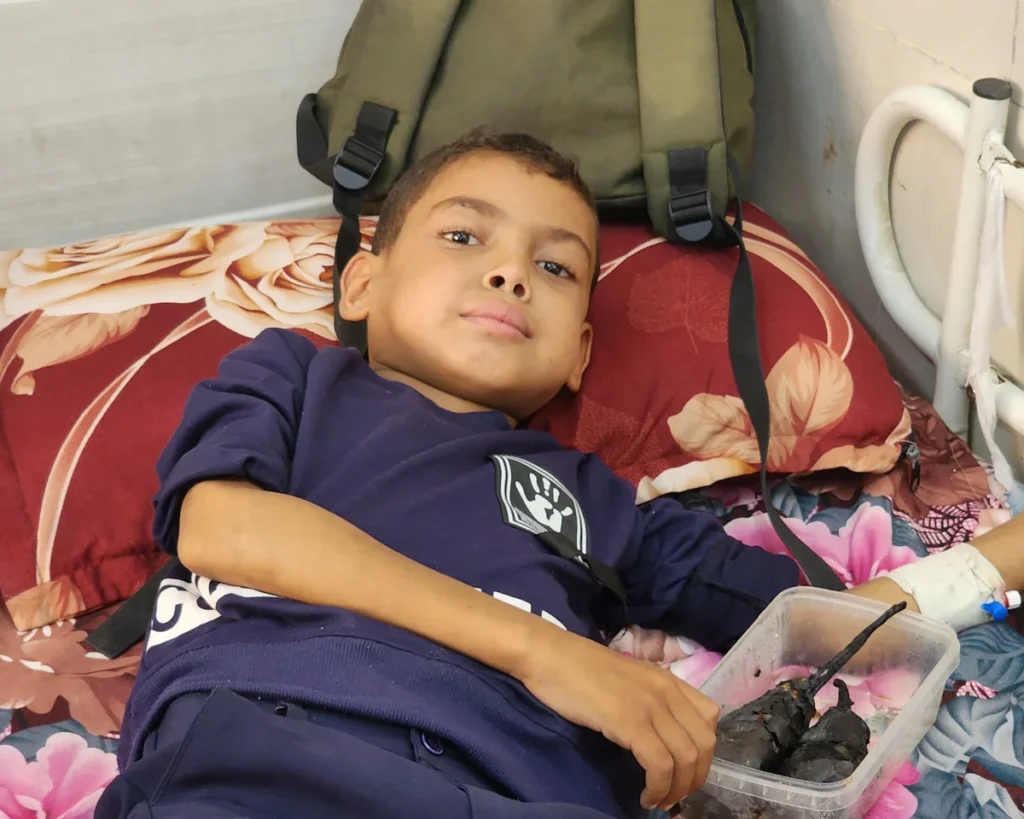In Gaza, hope remains fragile even after the ceasefire that began on October 10. The World Health Organization (WHO) reports that around 15,000 patients urgently need medical evacuation, many of them children facing life-threatening conditions.
At Nasser Hospital, 10-year-old Amar Abu Said lies paralysed from the neck down after being struck by a stray bullet fired by an Israeli drone. The bullet is lodged between two vertebrae, and his mother, Ola, says doctors fear surgery could cause a fatal stroke or brain hemorrhage. “He needs surgery in a well-equipped place,” she pleads. “But Gaza doesn’t have that anymore.”
Nearby, another 10-year-old, Ahmed al-Jadd, battles a brain tumour. His sister, Shahd, says he once sold water to help their displaced family survive. “We can’t lose him,” she says softly. “We already lost our father, our home, and our dreams.”
On Wednesday, the WHO coordinated the first medical convoy out of Gaza since the ceasefire began, evacuating 41 patients and 145 caregivers via Israel’s Kerem Shalom crossing. The patients were taken to hospitals in Jordan for treatment.
The WHO has appealed for the rapid expansion of evacuations, emphasizing that Gaza’s crippled hospitals can no longer handle the surge in critical cases. The organization urges Israel to reopen the Rafah crossing with Egypt, which has remained closed since May 2024 when Israeli forces took control of the area.
WHO Director-General Dr. Tedros Adhanom Ghebreyesus called on Israel to allow Gazan patients to receive treatment in the occupied West Bank and East Jerusalem, as was done before the war.
Despite growing pressure from EU leaders and foreign ministers, thousands of Gazans remain trapped in deteriorating hospitals, waiting for a chance at survival that grows slimmer by the day.

